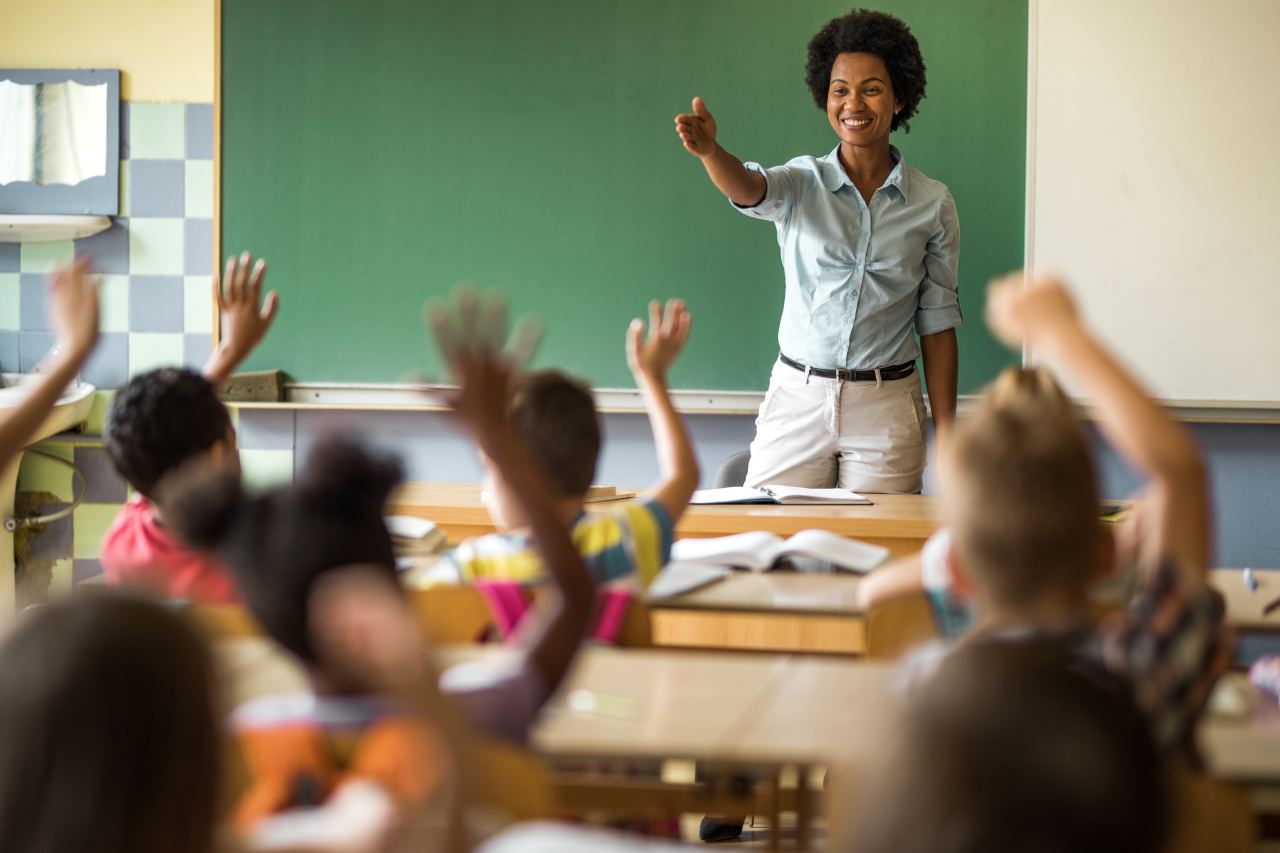Top Primary Science Tuition Singapore to Help Your Child Excel
Top Primary Science Tuition Singapore to Help Your Child Excel
Blog Article
A Comprehensive Overview to the Different Discovering Techniques in Key Science Direction
The expedition of diverse understanding approaches in key science instruction offers an opportunity for instructors to improve pupil interaction and understanding substantially. By taking a look at hands-on discovering methods, inquiry-based strategies, and joint techniques, we can recognize reliable practices that deal with different discovering styles. Additionally, the combination of innovation and set apart direction plays an essential function in promoting an inclusive atmosphere. However, the question continues to be: just how can these techniques be successfully implemented in the class to maximize their effect? The answer hinges on a better evaluation of each technique and its ramifications for teaching science.

Hands-On Discovering Methods
Hands-on understanding techniques play a crucial duty in key science direction, engaging students in energetic expedition and trial and error. These approaches allow students to communicate directly with sensations and materials, cultivating a much deeper understanding of clinical principles. By making use of manipulatives, designs, and real-life experiments, teachers develop an environment where students can observe, assume, and test their concepts.
Such methods not just boost understanding however also cultivate critical thinking and analytic skills. When pupils join tasks like constructing straightforward equipments, planting seeds, or conducting chain reactions, they are encouraged to ask questions and look for answers through their own monitorings. This experiential method aids to debunk intricate scientific concepts, making them much more relatable and easily accessible.
Moreover, hands-on knowing advertises collaboration among peers, as trainees commonly operate in groups to conduct experiments or share searchings for. This synergy not only enhances their learning experience however additionally creates necessary social skills. Eventually, incorporating hands-on techniques in primary science instruction cultivates a long-lasting love of discovering and inquisitiveness concerning the environment, laying a solid foundation for future academic searches in scientific research and past.
Inquiry-Based Learning
Inquiry-based knowing is a training strategy that encourages students to ask concerns, check out sensations, and construct their own understanding of clinical principles. This method changes the focus from traditional teacher-led instruction to an extra student-centered experience, where learners take the effort in their instructional journey. By promoting curiosity, inquiry-based learning advertises deeper interaction with the material, allowing trainees to explore subjects in a significant context.
In technique, this approach typically entails hands-on experiments, monitorings, and crucial thinking activities that straighten carefully with the clinical method. Trainees are motivated to formulate theories, design investigations, and examine information, which cultivates vital skills such as problem-solving and logical thinking. The role of the teacher in this framework is to facilitate exploration, guiding pupils through the inquiry process while urging independent idea and partnership.
In addition, inquiry-based understanding nurtures a sense of ownership over the understanding process, encouraging students to go after understanding proactively. This technique not only enhances understanding of clinical concepts but likewise cultivates a long-lasting love for understanding, furnishing students with the abilities essential to browse a progressively complex globe.
Collaborative Knowing Approaches
Collaborative discovering approaches equip students to involve in meaningful communications with peers, cultivating a shared responsibility for their instructional outcomes. In key scientific research guideline, these methods motivate students to collaborate to explore scientific principles, address issues, and carry out experiments (primary science tuition Singapore). By joining team activities, trainees can utilize varied perspectives, permitting richer understanding and retention of clinical understanding
One key aspect of click for info collaborative knowing is the focus on communication abilities. Students need to articulate their ideas, pay attention actively to others, and negotiate concepts, all of which are crucial expertises in both academic and real-world contexts. This social interaction not just boosts their understanding of clinical principles yet also advertises team effort and problem resolution skills.
When trainees see the worth of their contributions within a group, they are a lot more likely to take ownership of their learning journey. Generally, integrating collective discovering strategies in key scientific research direction grows a vibrant knowing atmosphere that prepares students for future academic and social obstacles.
Innovation Combination in Science
The assimilation of technology in primary scientific research instruction boosts discovering experiences by providing innovative tools and resources that support various mentor techniques, including collective learning - primary science tuition Singapore. Using digital platforms, simulations, and interactive applications allows trainees to involve deeply with scientific principles, facilitating a more hands-on technique to knowing
Online research laboratories, for example, enable students to perform experiments safely and effectively, promoting inquiry-based understanding. These tools can replicate real-world scientific scenarios, enabling students to picture complicated procedures that would be tough to reproduce in a conventional class setting. Innovation fosters communication and collaboration among pupils, as they can share searchings for and function together on tasks with on-line platforms.
Furthermore, multimedia discussions and academic videos can enrich lessons by satisfying diverse learning designs, making abstract concepts a lot more obtainable. Data evaluation tools likewise equip students to collect and interpret scientific information, reinforcing crucial assuming skills. On the whole, the tactical incorporation of modern technology in primary science direction not only enhances involvement but additionally prepares trainees for a highly advanced culture, outfitting them with important skills for future scientific ventures.
Distinguished Direction Methods
Distinguished direction methods are necessary for resolving the diverse requirements of students in key scientific research education and learning. These methods allow educators to customize their training methods to suit varying capabilities, rate of interests, and discovering designs within the class. By utilizing separated direction, educators can produce an inclusive environment that cultivates interaction and boosts understanding of scientific concepts.
One effective strategy is to make use of adaptable grouping, which enables trainees to team up with peers at comparable ability levels or with varying perspectives. This approach urges peer understanding and advertises important thinking. In addition, providing choices in projects can empower pupils, allowing them to select projects that resonate with their passions while still meeting curricular objectives.
Furthermore, including tiered official statement assignments is one more valuable method. By creating jobs with varying degrees of intricacy, teachers can ensure that all pupils are suitably challenged, despite their effectiveness. Utilizing developmental analyses to evaluate understanding additional allows instructors to adjust their educational techniques dynamically, making sure that each learner gets the support they need.
Inevitably, executing set apart instruction techniques in main science education and learning not just boosts trainee learning end results but additionally cultivates a passion for science, preparing trainees for future academic quests.

Verdict
In summary, effective primary scientific research direction requires a diverse method that includes hands-on learning, inquiry-based techniques, and joint strategies. The integration of innovation and separated guideline further satisfies varied knowing designs, fostering a setting for expedition and essential thinking. By implementing these techniques, educators can boost trainee interaction and comprehension, inevitably supporting a lifelong interest for science and questions. Such detailed approaches are important for establishing informed and curious link future researchers.
The expedition of diverse knowing methods in key scientific research instruction provides a possibility for instructors to enhance student interaction and comprehension dramatically.Hands-on learning techniques play an essential duty in primary science guideline, engaging pupils in energetic expedition and trial and error.Inquiry-based learning is an educational strategy that motivates trainees to ask concerns, investigate phenomena, and construct their own understanding of clinical principles.Collaborative understanding approaches empower pupils to engage in purposeful interactions with peers, cultivating a shared responsibility for their academic outcomes. On the whole, integrating collective learning techniques in primary scientific research guideline grows a vibrant understanding atmosphere that prepares students for future scholastic and social obstacles.
Report this page